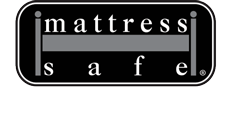Categories
Categories
Tips for Effective Bed Bug Treatment
Posted by on
Bed bugs are a serious problem, and infestations can quickly grow out of control. Bed bug prevention is essential before bed bugs become an issue in your home. In cases where there is already an infestation, or signs of bed bugs, you want to ensure the problem is addressed immediately.
- Wash All Bedding: Launder all bedding on the hottest temperature possible to remove eggs and feces. Remember to wash or replace pillows, as bed bugs do get inside pillows.
- Thoroughly Clean the Area: Vacuum carpeting and mattresses and move all furniture and vacuum underneath these areas. Dust night stands, lamps, and other furniture. Remember to get into cracks and crevices, as bed bugs can hide in these areas.
- Use Encasements: Purchase an encasement for your mattress and box spring to keep bed bugs from getting inside. The encasement is sealed so bed bugs are unable to attach themselves to the mattress or box spring.
- Conduct Daily Inspections: After the area has been properly treated, inspect it on a daily basis for signs of bed bug activity. Bed bugs survive for a long period of time without ingesting blood, and they can continue to be a problem if left unchecked.
After the home has been treated, prevention is the next step. Prevention involves using the right types of products to keep bed bugs from getting into bedding. Purchase and install Mattress Safe® bed bug certified mattress protection products and other protective products. These products keep bed bugs from getting into the mattress, box springs, and pillows. Other preventive tips at home include:
- Wash Bedding Frequently: Launder all bedding at least once a week.
- Routine Inspections: Inspect the sleeping areas in the home, especially after guests have visited. Do not overlook inspecting pets’ bedding and sleeping areas, as well as common areas such as couches. Bed bugs also like to hide behind baseboards and in cracks.
- Inspecting Used Furniture: Make sure to check all used furniture, before bringing it into the home, and clean it outdoors before carrying it inside.
When traveling, you also need to protect yourself against bed bugs. Many home infestations were started by someone bringing bed bugs home in their luggage or clothing after staying in a hotel. There are bug-proof mattress and bedding protectors you can purchase and take along with you whenever you are traveling. Upon arrival at the hotel, perform an inspection of the room for signs of bed bugs. If you notice signs of an infestation, request a new room. Even if there are no signs of an infestation, use the protective products to encase your laundry, luggage, hanging clothes, pillows. Encasing soiled clothes and suitcases prevents bed bugs from hitchhiking home with you.
Before leaving the hotel and returning home, shake out all clothing, and inspect all luggage, to make sure no bed bugs migrated overnight onto or into your suitcase or onto your hanging garment bag. Inspect he luggage and garment bag encasement thoroughly. When you arrive home, unpack your luggage outdoors or in your garage rather than carrying bags into the home. wash all your unused and soiled clothes before putting away in your closets and drawers just in case a stray bed bug did manage to come home with you.
For more information about bed bug certified protective covers, mattresses, and other preventive bed bug bedding products, contact Mattress Safe® by calling 770-205-5335.
 Loading... Please wait...
Loading... Please wait... 



